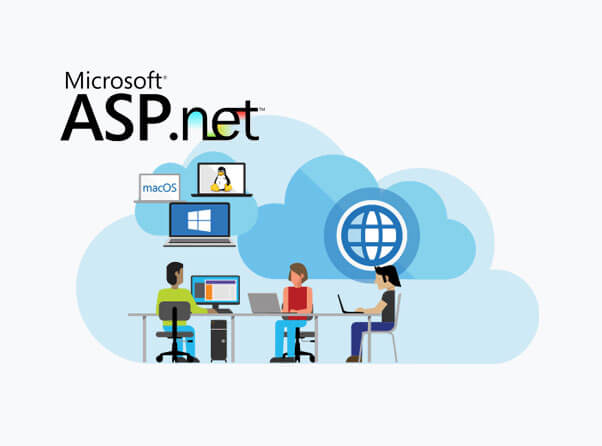
Learning outcomes:
At the end of the course the participant will
- Create a Web form with server controls.
- Separate page code from content by using code-behind pages, page controls, and components.
- Display dynamic data from a data source by using Microsoft ADO.Net and data binding.
- Debug ASP.Net pages by using trace.
The Visual Basic Language Essentials
- Introducing ASP.Net
- Creating Web Forms
- Adding ASP.Net Code to a Page
- Handling Page Events
- Discussion: ASP vs. ASP.Net
Using Web Controls
- What are Web Controls
- Using Intrinsic Controls
- Using Input Validation Controls
- Selecting Controls for Applications
Using ASP.Net Objects
- Request Object
- Response Object
- Session Object
- Application Object
- Server Object
- Object Context Object
- Properties, Methods, Events and Collections of the above Objects
Creating Master Pages
Consuming Master Pages
Understanding Ajax Controls
- Toolkit Script Manager
- Calendar Extender
- Slide Show Extender
- Tab Container
Using Ajax Controls in a ASP.Net Web application
Using Microsoft ADO.Net to Access Data
- Overview of ADO.Net
- Connecting to a Data Source
- Accessing Data with Date Sets
- Using Stored Procedures
- Accessing Data with Data Readers
- Binding to Extensible Markup Language(XML) Data
Using Trace in Microsoft ASP.Net Pages
- Overview of Tracing
- Trace Information
- Page-Level Trace
- Application-Level Trace
Creating a Microsoft ASP.Net Web Application
- Requirements of a Web Application
- What is New in ASP.Net
- Sharing Information Between Pages
- Securing an ASP.Net Application
Web Services
- Creating a Web Service in ASP.Net
- Consuming a Web service in ASP.Net
- HTTP-GET
- HTTP-POST
- Web Service Description Language
- Web Service Proxy
New Features of ASP.Net
- Application-wide registration of custom controls.
- Programmable Configuration.
- Web Part controls.
- Posting to other pages
- SQL Cache Dependency
- Master Pages.
- Visual Studio .Net project model
- Declarative Data binding.



